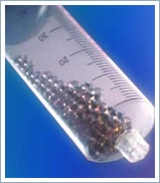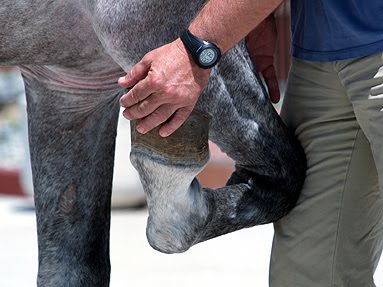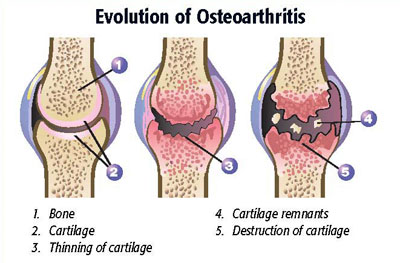One of the newer substances that veterinarians can injected to horse joints (and other places, too) is known as IRAP®, or more generically, autologous conditioned serums (ACS). IRAP is an acronym, and the name says it all; here’s what it means.
I stands for interleukin-1 (I-1). Interleukins are a group of protein molecules that are involved in the process of inflammation. I-1 levels are increased in joint inflammation (arthritis).
R stands for receptor. For interleukin-1 to work, it has to bind to a special receptor-site in the joint capsule that lines the joint.
A stands for antagonist. An antagonist to anything offers opposition to that thing.
P stands for protein. Proteins are any of a huge group of nitrogen-containing compounds that are essential components of life. The protein in IRAP binds to the receptor where I-1 binds, and acts to antagonize the activity of I-1.
As for ACS –
A stands for autologous, which means that it comes from the horse’s own body.
C stands for conditioned, which means that you have to do something to the…
S which is the horse’s own (autologous) blood serum, serum being the liquid that makes up blood after the cells and some of the protein has been removed.
So, in sum, IRAP is a protein that works by binding to the receptor site on the joint capsule where the inflammatory protein interleukin-1 binds. Essentially, IRAP plugs up the receptor site, and leaves the I-1 without a home. When I-1 can’t bind, it doesn’t work very well. Thus, IRAP helps prevent interleukin-1 from contributing to joint inflammation.
A clever bit of biochemistry is responsible for IRAP. In the 1990’s, a German biochemist found that the white blood cells that normally circulate in your horse’s bloodstream could be stimulated to producethe IRAP protein. To start the process, blood is drawn into a special syringe containing glass beads coated with a substance that enhances the production of anti-inflammatory proteins, including IRAP. The syringe is then incubated for 24 hours. Following incubation, the syringe is centrifuged, and 20 – 25 ml of IRAP serum is collected (enough for 5 – 6 doses). The serum is filtered to weed out any bacteria, and then frozen into doses for later use. When needed, it’s thawed, and injected into inflamed areas, including joints, in and around tendons, and into the uterus of female horse’s too (it’s being tried to help mares with reproductive problems).
Of course, being a horse owner, and wondering if you should use the product in your horse, you’re really interested in one question: “How effective is it?” Well, here’s where things get a little sticky. One study in horses, as well as a study of 376 people with osteoarthritis of the knee, have each concluded that it’s an effective treatment for joint inflammation. But that’s not the whole story.
As with many things scientific, there’s still a lot to be learned. In 2019, a study of 20 horses (which is not a lot, but that’s the way things often go in horse medicine) found that just over half of the treated horses responded to injection with IRAP/ACS. The horses that responded tended to have higher levels of I-1 in their ACS than did the horses that didn’t respond. This same thing has been shown in people, as well as in experimental models in horses. The higher levels of I-1 didn’t have anything to do with the product – it had everything to do with the individual horse.
There are other questions, as well (as there often are in science). I-1 is not the only inflammatory protein in horse joint disease, inflammatory proteins are not the only problem in horse arthritis, and horse arthritis is a big, complex picture in and of itself. Here’s what I mean:
- It’s all well and good to target I-1, but if there are other inflammatory proteins (and there are), addressing only one of them might not be all that’s needed.
- A horse with a joint with chronic arthritis that is affecting the bone and cartilage is likely to respond a lot differently than a horse that just as some inflammation due to a bad step. That is, the worse the damage in the joint, the less likely the product – any product – is to work.
- How lame the horse is and X-rays findings don’t always correlate well with how bad the problems in the joint are. If you’re treating a horse that has more severe joint damage, but you can’t tell that it has more severe joint damage, your chances of success go down and your chances of looking helpless go up. Of course, you might be able to do an MRI on every horse to see how things are going, but some people like to own horses and also be able to afford to eat.
Another question is the treatment protocol. The common treatment protocol is 3 injections spaced about 2 weeks apart. However, this treatment protocol isn’t really based on anything other than experience and opinion. Experience and opinion are the shifting sands under treatment houses (that is, experience and opinion aren’t necessarily the best foundations for any treatment). Furthermore, the “shot every two weeks” treatment schedule can be a bit of a problem for some horse owners and trainers, in terms of both time and expense, as well as the potential for adverse effects from repeated injections (to be clear, that risk is very low, but it’s still a risk). There’s also some evidence that a 2-day injection interval is better (at least from a laboratory perspective – the study didn’t look at lame horses). To sum it up, when it comes to ACS, the “best” treatment schedule isn’t known, and it could likely vary between horses and be dependent on the condition being treated, as well.
One big question that remains unanswered is whether the “C” in ACS is really needed anyway. Interestingly, one study, from back in 2013, comparing IRAP/ACS with just plain old serum (unconditioned serum, as it were). As it turned out in that study, the conditioned serum had “minimal” benefits to regular old serum. All of the muss without the fuss, as it were.
So here’s my take. IRAP® is certainly another option for treating your horse’s joints – whether or not it’s a better option is a question that still needs to be answered. There is a big difference between treating inflammation and eliminating the cause of inflammation. Otherwise stated, with IRAP, you might be able to calm the fire down, but you may not be able to put it out. In addition, you have to consider the expense of the product compared to other, more easily obtained, alternatives.
What’s the bottom line? Well, IRAP/ACS is not likely to be directly harmful. Such risk as there is, is more likely related to the procedure than it is to the product. IRAP is more expensive than some alternatives, and it is most assuredly not a cure for osteoarthritis. And it can be tried in other areas, too. In certain cases, say, where you or your veterinarian have concerns about the use of corticosteroids (a whole ‘nother kettle of fish), it is perhaps worth a try. In case you’re wondering, I used it a good bit when it came out but I haven’t used it in a while.








